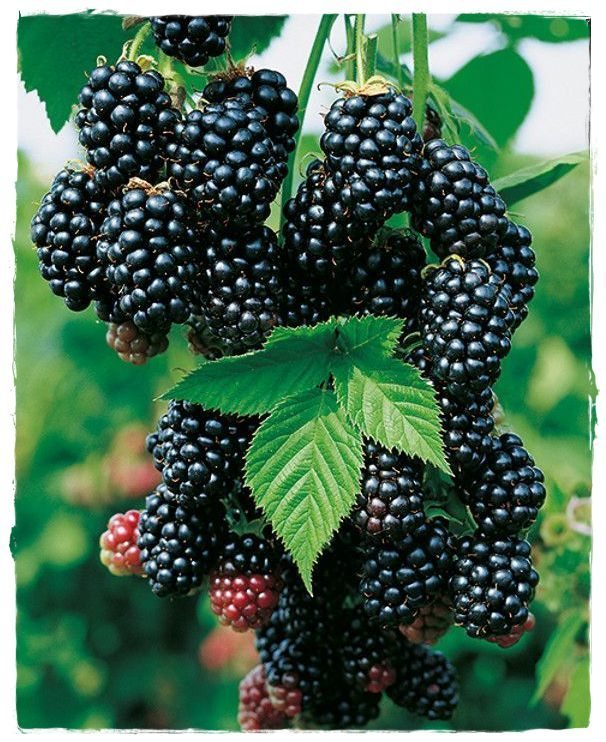A dangerous alien shrub in our yards: Rubus fruticosus (blackberry)

According to the South African National Status Report on Biological Invasions in South Africa (2018), many alien/exotic/non-native plant species have been introduced for various reasons to South Africa. Among the alien species that are introduced, it is estimated that 10% become invasive thereby inflicting harm to the environment. This war to protect and maintain our endemic natural ecosystem from alien species cost South African government at least US$1 billion per year (ZAR 15 billion), of which at least ZAR 2 billion (US$142 million) is for the management alone (van Wilgen et al., 2020).
One of these alien species is the Rubus fruticosus, a native to much of Europe and is also known as a blackberry tree. In South Africa, the introduction and spread of the Rubus fruticosus species and other Rubus species have been intentional as a fruit crop (Bromilow, 2001), with the movement intensified by agents such as birds and by horticultural escape (Faulkner et al., 2020). The Rubus fruticosus species grows up to 2 meters tall and is extremely variable in leaf shape and plant form but always produces its white to pink flowers. This species generally prefers moderate soil and climatic conditions regimes, making it highly adaptable to different environments. Its most preferred habitats includes but not limited to urban / peri-urban areas, natural and agricultural land. Large infestations of the blackberry species threatens both agricultural and natural ecosystems resulting in the reduction of productivity of land.
Though listed as a Category 2 species in South Africa (i.e. species with commercial or utility value, which may only be grown with a permit under controlled circumstances) according to the Alien & Invasive Species Regulations were published in 2014 in terms of the National Environmental Management: Biodiversity Act (NEM:BA; Act 10 of 2004), Rubus fruticosus is a highly invasive species in most provinces including the Western Cape, Gauteng, Eastern Cape, Free State and Northern Cape. This species competes aggressively with native species, with large potential to exclude and replace native vegetation. Available records show that this species is out-competing and dominating native vegetation, reducing biodiversity at invaded regions.
The blackberry species is very difficult to control because of its extensive vegetative reproduction. This species is shade-intolerant, so planting fast-growing shrubs or trees may prevent its reestablishment. Re-sprouting is problematic, and many years of follow-up efforts such repeated mowing and by pasturing with goats. Goats prefer to eat the blackberry species to other plants and can act as an effective and cheaper agent (biological) in the eradication of infested areas using herbicides. Research has shown that the herbicides picloram, 2, 4, 5 T, and a combination of aminotriazole & ammonium thiocyanate are effective at controlling the blackberry species (Global Invasive Species Database, 2020). Blackberry has been effective managed by a combination of control techniques including burning, slashing, grazing, grubbing, chemical spraying and biological control.
The Centre for Ecological and Sustainability Advisory advises on measures to prevent, control and eradicate the infestation of the problematic species. This specialized team also uses comprehensive strategy to raise awareness of the presence and negative impacts of alien species. Should you either have the problem with blackberry invasions, please contact the Centre for Ecological and Sustainability Advisory Support Office: Telephone: +2768 0955 498, Email: info@centreforecology.co.za.
References
Bromilow C, 2001. Problem plants of South Africa: a guide to the identification and control of more than 300 invasive plants and other weeds. Pretoria, South Africa: Briza Publications. 264 pp.
Faulkner KT, Burness A, Byrne MJ et al. 2020. South Africa’s pathways of introduction and dispersal and how they have changed over time. In: van Wilgen BW, Measey J, Richardson DM, Wilson JR, Zengeya TA (eds) Biological invasions in South Africa. Springer, Berlin, pp 311–352. https://doi.org/10.1007/978-3-030-32394-3_12.
Global Invasive Species Database. 2020. Species profile: Rubus discolor. Downloaded from http://www.iucngisd.org/gisd/speciesname/Rubus+discolor on 01-09-2020.
van Wilgen BW, Measey J, Richardson DM et al (eds). 2020. Biological invasions in South Africa. Springer, Berlin, pp 593–624. https://doi.org/10.1007/978-3-030-32394-3_21